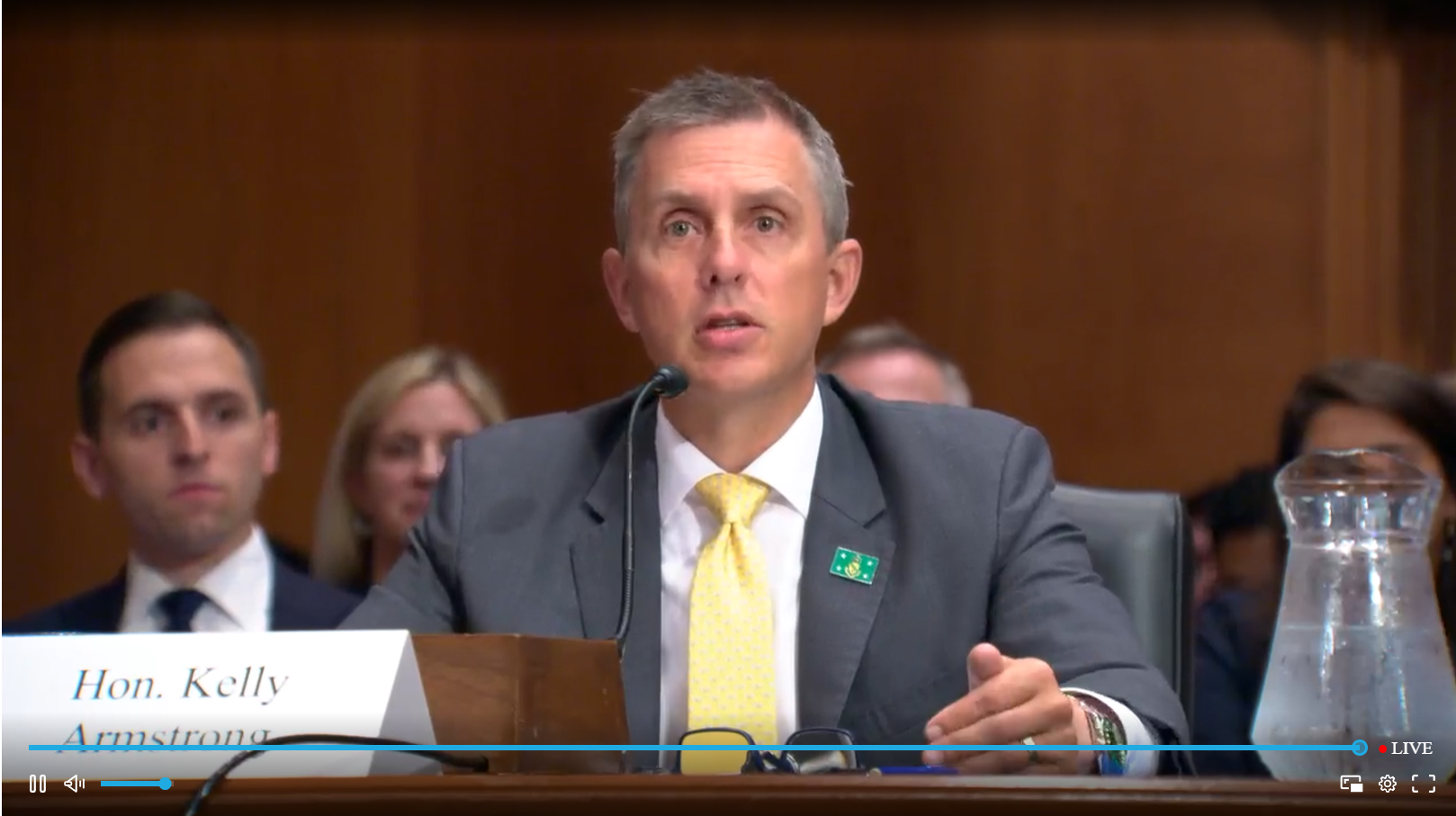On behalf of the nation’s governors, the National Governors Association (NGA) wishes to thank Chairman Rockefeller, Ranking Member Hutchison and the members of the Committee for examining how to best create a nationwide broadband network for public safety.
Governors believe the development of an interoperable broadband network for public safety is essential for enhancing the ability of first responders to save lives and protect property. Development of such a system is dependent upon solving the key issues of spectrum allocation, funding and governance. Policies that address one issue without solving or supporting solutions for the others will only hinder progress towards reliable and interoperable communications.
NGA is supportive of S. 3756, the Public Safety Spectrum and Wireless Innovation Act, because it would take advantage of the unique opportunity to dedicate sufficient contiguous spectrum to first responder communications by reallocating 700 MHz D block spectrum to public safety, establish a funding source for construction and operation of the network and address key governance issues necessary to ensure nationwide interoperability.
Spectrum Allocation
The chance to allocate 700 MHz D block spectrum to public safety represents an unparalleled opportunity to develop a robust, modern and reliable nationwide interoperable network.
For years, the public safety community has sought to build a nationwide broadband network that can provide first responders with the ability to leverage video and data communications technologies currently available to commercial customers. A primary challenge in doing so, however, has been the lack of sufficient spectrum that can be dedicated to support the everyday needs of first responders and provide excess capacity during times of emergency.
Past efforts to develop and maintain interoperable communications have been hindered by the Federal Communications Commission’s (FCC) allocation of small sections of spectrum across different frequency bands for public safety use, none of which are large enough to consolidate communications into a single segment of spectrum. Since devices operating on different frequencies cannot talk to each other, public safety agencies have sometimes been forced to install two or more radios in each response vehicle to ensure neighboring agencies can communicate. This solution is costly and cumbersome.
Without access to a single sufficient block of spectrum, public safety will yet again be forced to develop another limited-capacity system that will require agencies to maintain separate networks for video and data communications and separate voice systems. On the other hand, if the D block were combined with the existing 10 MHz of adjacent public safety spectrum, public safety communications could eventually be migrated from other spectrum bands to allow for more streamlined, efficient and cost-effective communications systems.
We should note that while the migration of voice systems to broadband should be explored for potential future consolidation, it will take time to develop and refine the technology. Narrowband spectrum is used for existing or developing interoperable voice communications systems that cannot currently be migrated to broadband. Allowing broadband communications on such spectrum now could lead to interference and compromise interoperability. Therefore, the requirement in Section 103 of S. 3756 to open the existing narrowband spectrum to broadband communications could prove detrimental to current mission-critical radio communications and should be revised. NGA would welcome the opportunity to work with the Committee to resolve this concern.
NGA does not support the FCC’s plan to auction the 700 MHz D block for commercial purposes and provide public safety with roaming and priority access on other 700 MHz broadband networks for a fee. As demonstrated repeatedly during recent disasters, excessive demand can clog commercial systems and prevent users from accessing the network. First responders require more reliable access, especially in times of emergency. Furthermore, previous efforts to provide first responders with priority access on commercial systems have failed to meet public safety reliability requirements largely because commercial providers must first and foremost be concerned with providing service to their customers, not public safety. To ensure the ability to communicate during an emergency, public safety must have guaranteed access to spectrum which can only be accomplished if the network is dedicated for public safety.
Funding
The D block is a valuable asset that, if reallocated to public safety, could allow state and local governments greater flexibility to innovate in the development and administration of the network. This could achieve economies of scale and allow new opportunities for public-private partnerships to reduce the costs of constructing and maintaining the network. Regardless, construction of a nationwide network – whether it is built on 10 or 20 MHz of spectrum – will be a costly endeavor.
As states continue to face budget gaps after several years of unprecedented declines, federal funding to support network construction and maintenance will help ensure its timely development and nationwide deployment. S. 3756 would address these funding challenges through the establishment of grant programs for construction and maintenance. These grants would be funded through future auctions of spectrum and could provide billions of dollars in financial support for a critical national communications asset.
Governance
In addition to the spectrum and funding issues discussed above, establishing clear governance guidelines for the network will be critical to ensuring nationwide coverage and interoperability. S. 3756 recognizes the importance of the coordinated development of the public safety network by requiring the FCC to establish technical and operational requirements and by authorizing states to oversee the issuance of requests for proposals related to the network.
While maintaining flexibility for local areas to begin network construction ahead of the state, the legislation would ensure that any advanced network deployments are coordinated throughout the state or region. This will facilitate interoperability and coordination between existing voice communications systems, such as land mobile radio, and the public safety broadband network. It will also help ensure that rural areas are included in the nationwide network in a timely manner.
Conclusion
The development of an interoperable broadband network for public safety is essential for enhancing the ability of first responders to save lives and protect property. S. 3756, the Public Safety Spectrum and Wireless Innovation Act, would support the critical communications needs of the nation’s firefighters, police officers and emergency medical personnel. By reallocating the D block to public safety, S. 3756 would ensure that this one time opportunity to avoid the mistakes of the past and allocate appropriate contiguous spectrum is not lost. The legislation will also help expedite the development of the nationwide broadband network by providing a dedicated funding source and addressing key governance issues necessary to ensure nationwide interoperability.
NGA urges Congress to pass S. 3756 and looks forward to working with the Committee to support this important legislation.












